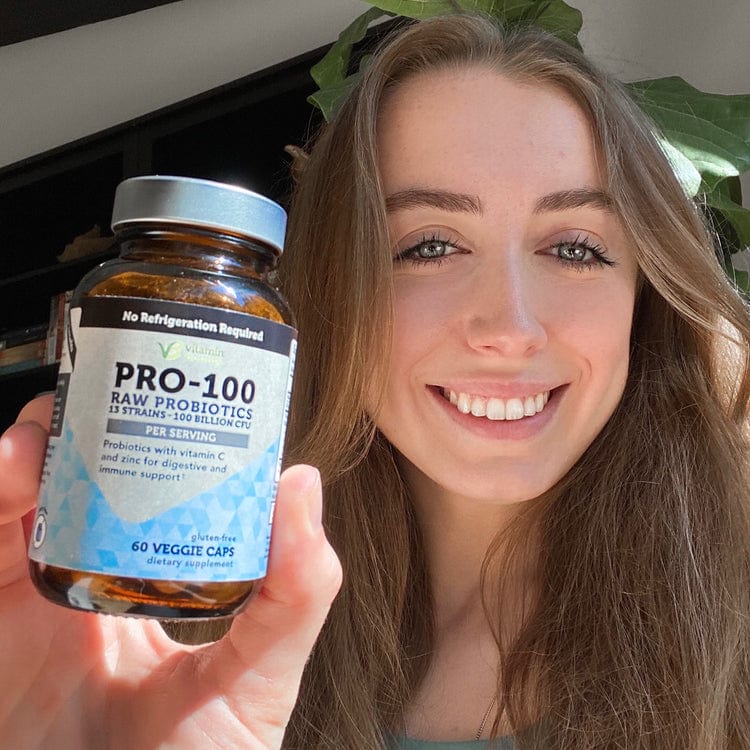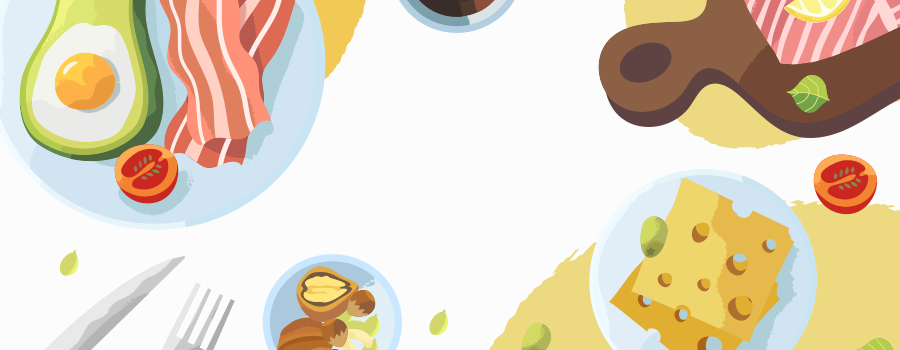The ketogenic diet is a very low-carb, high-fat diet that’s taking the wellness world by storm. After decades of embracing low-fat, low-calorie diets, people are scrambling for the details on a program that lets them eat butter and bacon and still lose weight.
And the keto diet isn’t just celebrated for fat loss. Studies suggest that a strict keto diet may also help with epilepsy, diabetes, cancer, and age-related brain degenerative diseases like Alzheimer’s.[1][2][3][4]
But does the keto diet really work? And is it for everyone? Read on for the details of a ketogenic diet and how to know if the keto diet is right for you.
What Is The Ketogenic Diet?
The keto diet is a very low-carb, high-fat diet that eliminates most grains and processed foods. It involves drastically reducing carbohydrate intake and replacing most of those calories with healthy fats from foods like fatty meats, fish, avocados, coconut oil, and nuts and seeds.
This gets you into nutritional ketosis -- a metabolic state wherein your body uses fat for energy instead of glucose from carbohydrates. Ketosis works by turning fat into ketones in your liver, which your body and brain then use for fuel.[5]
How The Ketogenic Diet Works
You only get the benefits of a keto diet when you stick to a pretty strict set of macronutrient ratios. In most studies on the keto diet, this consists of:[6]
- 55-70% fat
- 20-35% protein
- 5-10% carbs
Some experts define a keto diet as any diet that restricts carbs to 50 grams per day or fewer.[6]
But unlike the famous Atkins diet, the ketogenic diet isn’t known as a super high-protein diet. Instead, the keto diet includes plenty of low-carb veggies and healthy fats to keep ketone production high.
Keep in mind that your macronutrients will vary, depending on your goals and your health history. In fact, there are different types of ketogenic diets designed for different lifestyles and health goals. These include:
- Standard ketogenic diet (SKD): Studies define a standard keto diet as anywhere between 55-80% fat, 20-35% protein, 5-10% carbs.
- Cyclical keto diet (CKD): This typically involves carbohydrate “refeeds” or 1-2 days per week where you eat more carbs. The rest of the time, you’re in ketosis. This works better for athletes or folks who have trouble keeping weight on.
- Targeted ketogenic diet (TKD): Another option for gym rats and athletes, the TKD allows for higher-carb meals before or after hard workouts.
- High-protein keto diet (HPKD): Very similar to a standard keto diet, this version just allows for more dietary protein -- 35-40% protein instead of 20%. Carbs stay low at 5% of calories or below 50 grams per day.
While having some options to play with is great, it’s important to note that most of the studies on the ketogenic diet were done with SKD macros.
Regardless of the type of keto diet you choose, the benefits really start to show after you’ve been in ketosis for about 3-4 weeks. That’s when your body becomes more efficient at burning fat, and you can get off the blood sugar rollercoaster that comes with eating copious carbs.
Potential Benefits of The Keto Diet
You’ve already heard how easy it is to lose unwanted fat and get your energy back with the keto diet. But there are several possible health benefits to getting into ketosis.
Here are just a few science-backed ways the keto diet can keep you healthy for the long-run:
- Weight Loss [7][8][9][10]
- Metabolic syndrome [11]
- Diabetes [12][13][14][15][16]
- Heart Disease [17]
- Cancer [18][19]
- Alzheimer’s Disease [19]
- Dementia [20]
- Parkinson’s Disease [21]
- Epilepsy [22]
- Polycystic Ovary Syndrome (PCOS) [23]
- Traumatic Brain Injury [24][25]
Foods To Include on a Keto Diet
Getting into ketosis means drastically cutting your carb intake. So, by default, many ketogenic diets end up consisting mostly of meat, dairy, eggs, and low-carb vegetables and some low-sugar fruits. Here’s a broad list of keto-approved foods:
- Meat
- Fish and seafood
- Eggs
- Full-fat dairy
- Nuts
- Seeds
- Most non-starchy vegetables
- Avocados
- Healthy fats and oils
- Herbs and spices
- Low-sugar condiments
Foods to Avoid on a Keto Diet
Merely cutting out bread, pasta, and desserts may not be enough if you’re trying to get into ketosis. Carbs and sugar have a way of hiding in many packaged and processed foods. Even some vegetables are surprisingly high in carbohydrates.
And since even natural sugars are limited on a keto diet, there are many foods typically considered “healthy” that you’ll need to avoid:
- Sugar and sugar-containing foods
- Most processed foods
- Grains
- Root vegetables
- Tubers
- Fruit (except some berries)
- Beans and legumes
- Condiments with added sugars and starches
- Sauces with added sugars and starches
- Most alcohol
Possible Side Effects of a Ketogenic Diet (And How to Avoid Them)
Ketosis turns your metabolism on its head, switching it from using glucose as energy to using fat for fuel. That kind of change can cause temporary symptoms known as the keto flu.
The keto flu comes with symptoms like fatigue, muscle aches, headaches, sleep issues, and digestive distress. It usually occurs 1-3 days after starting a ketogenic diet and can last up to 2-3 weeks.
No to fret -- there are a few ways to avoid these symptoms.
#1: Ease Into Ketosis
You might consider easing into a keto diet with a simple low-carb diet for a few weeks prior. Gradually reducing your carb intake over a few weeks might alleviate symptoms.
#2: Take Electrolytes
The most significant cause of keto flu is electrolyte loss. You can lose more electrolytes than usual when your body is using up glucose stores and switching into a ketogenic state.
To avoid any issues, keep hydrated and take an electrolyte supplement for the first 1-4 weeks on a keto diet.
Who Should Not Try a Ketogenic Diet?
The ketogenic diet isn’t for everyone. If you identify with any of the following, talk to your doctor before making any big nutritional change:
- You’re pregnant
- You’re breastfeeding
- Have trouble gaining or keeping weight on
- You have a history of eating disorders
Is the Keto Diet Right For You?
The ketogenic diet is a great way to balance blood sugar and lose weight, especially if you’re suffering from diabetes or other metabolic issues. There’s also some early evidence that being in a state of nutritional ketosis can help with illnesses like cancer and degenerative brain disease.
In fact, few diets have as many scientific papers examining its benefits. On top of the scientifically observable benefits, keto diet-enthusiasts report more energy, less brain fog, and almost effortless fat loss.
But the keto diet isn’t for everyone. If you’re an athlete or have certain medical conditions, you’ll want to check with your doctor before attempting the diet. Or try a modified keto diet like CKD or TKD.
Like every nutrition protocol, the only way to know if it’s for you is to try it. Check with your doctor to see if the ketogenic diet is for you.







Leave a comment
All comments are moderated before being published.
This site is protected by hCaptcha and the hCaptcha Privacy Policy and Terms of Service apply.